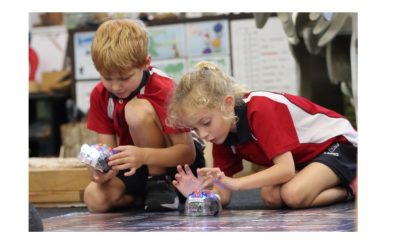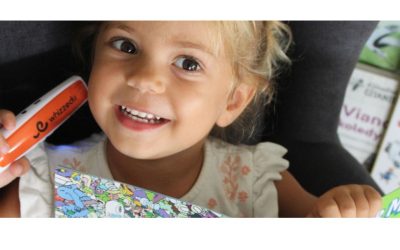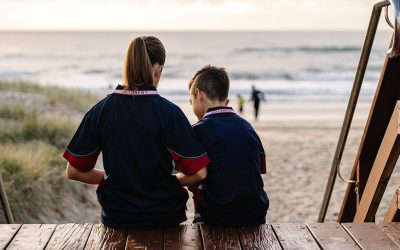Most parents would probably agree that school children nowadays seem to spend much of their school day completing or revising for tests. NAPLAN testing, as well as increasing paperwork for teachers, puts a great onus on our children to do well in literacy and maths. But what does this mean for creativity in schools?
Creativity according to Sir Ken Robinson
Creativity expert Sir Ken Robinson believes children are educated to become great workers, instead of creative thinkers. His TED Talk on the subject has been shared widely around the world. Are schools killing creativity?
Sir Robinson believes so. He says we are in danger of squandering our children’s creativity “pretty ruthlessly”. Kids at school will usually take a chance when working something out. If they’re not sure of an answer, they’ll have a go anyway – they’re not frightened of being incorrect. However, he says: “By the time they are adults most kids are frightened of being wrong. We run our companies this way, we stigmatise mistakes. We’re now running education systems where mistakes are the worst things you can make. The result is we are educating people out of their creative capacities.”
He strongly believes that creativity is as important in education as literacy and it should be treated with the same status, yet in every education system around the world, there is a hierarchy of subjects, and creative subjects like drama and dance are right at the bottom, while mathematics and literacy reign supreme. “As children grow up we start to educate them progressively from the waist up and then focus on their heads,” he says.
“The education system values academic ability highly because the system was invented in the nineteenth century to “fulfil the needs for industrialism.” Therefore, children grow up being told they shouldn’t pursue music or art because there’s no money in it and they’ll “never get a job doing that.”
He adds that there is a real danger that many talented creative people grow up thinking they are not capable simply because the creative subject they are good at, such as art or dance, isn’t valued in the school system.
The diversity of intelligence
Sir Robinson says there are three things we know about intelligence: it is diverse, dynamic and distinct. People think in different ways and intelligence is interactive. He adds that creativity often comes about “through the interaction of different disciplinary ways of seeing things”.
He described the early school life of Dame Gillian Barbara Lynne, the highly acclaimed choreographer behind hit Broadway show Cats. Unable to sit still and pay attention in class, her mother took her to see a doctor. After discussing Gillian’s “problems”, the doctor turned on the radio and then left the room with her mother. Gillian started to dance. The doctor told her mother that she wasn’t sick, she was a dancer. She enrolled at the Royal Ballet School and went on to have a wonderful career. Sir Robinson said: “Someone else might have told her mother to put her on medication and calm down.”
That, he said, is the problem with education today. We are searching for this particular “commodity” and creativity doesn’t necessarily fit into the picture. Children might be highly creative, but if they are not performing well on their numerical and literacy tests, they don’t fit the model that our current education systems are designed to produce. And this must change.
We need to change how we educate our children
“We have to rethink the fundamental ways by which we educate our children,” he urges. “We have to see creative capacities for the richness they are and see our children for the hope that they are. Our task is to educate their whole being for this future. We might not see this future but they will. Our job is to help them make something of it.”
To watch Sir Ken Robinson’s Ted Talk visit www.ted.com/speakers/sir_ken_robinson.
Related Stories
Sparking early literacy with creative play
Art Therapy – healing the soul with a paintbrush
Why art and craft REALLY matters





